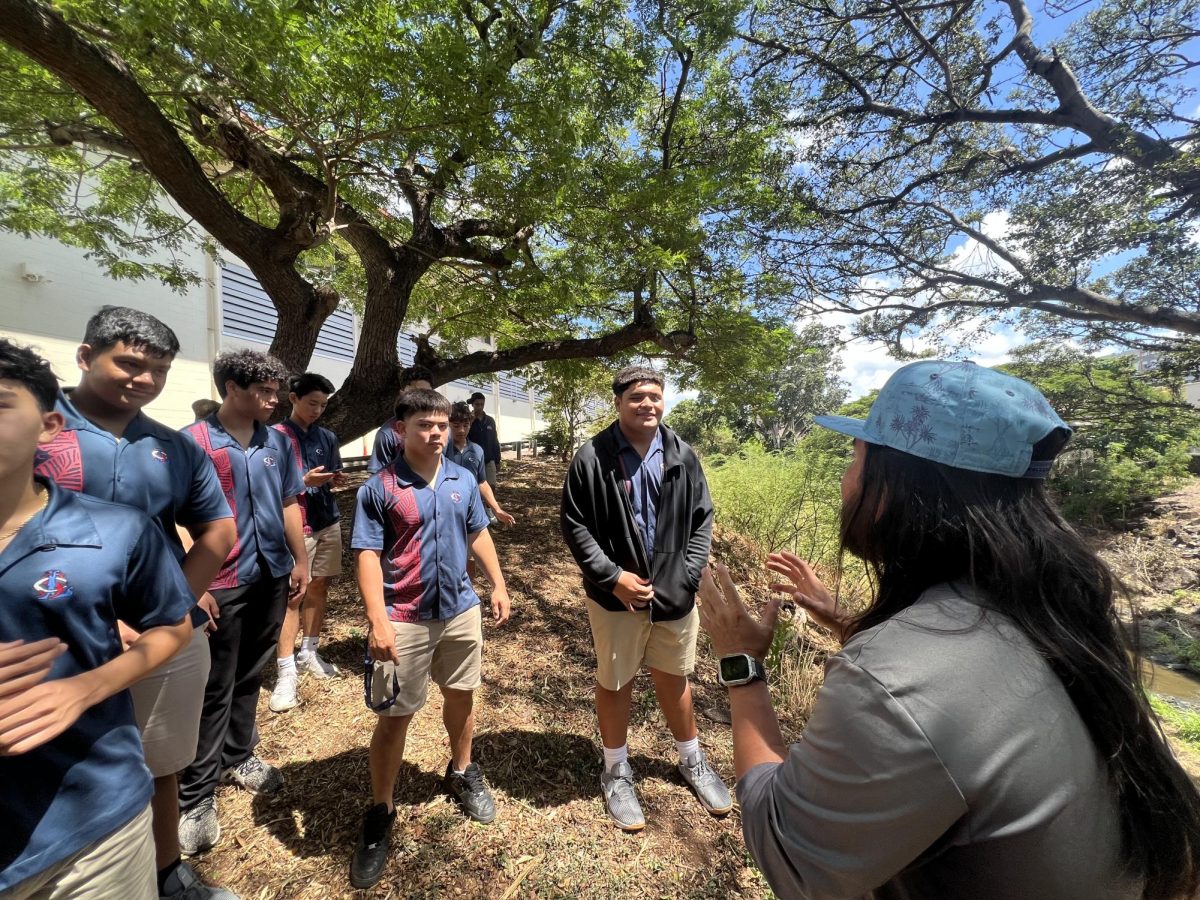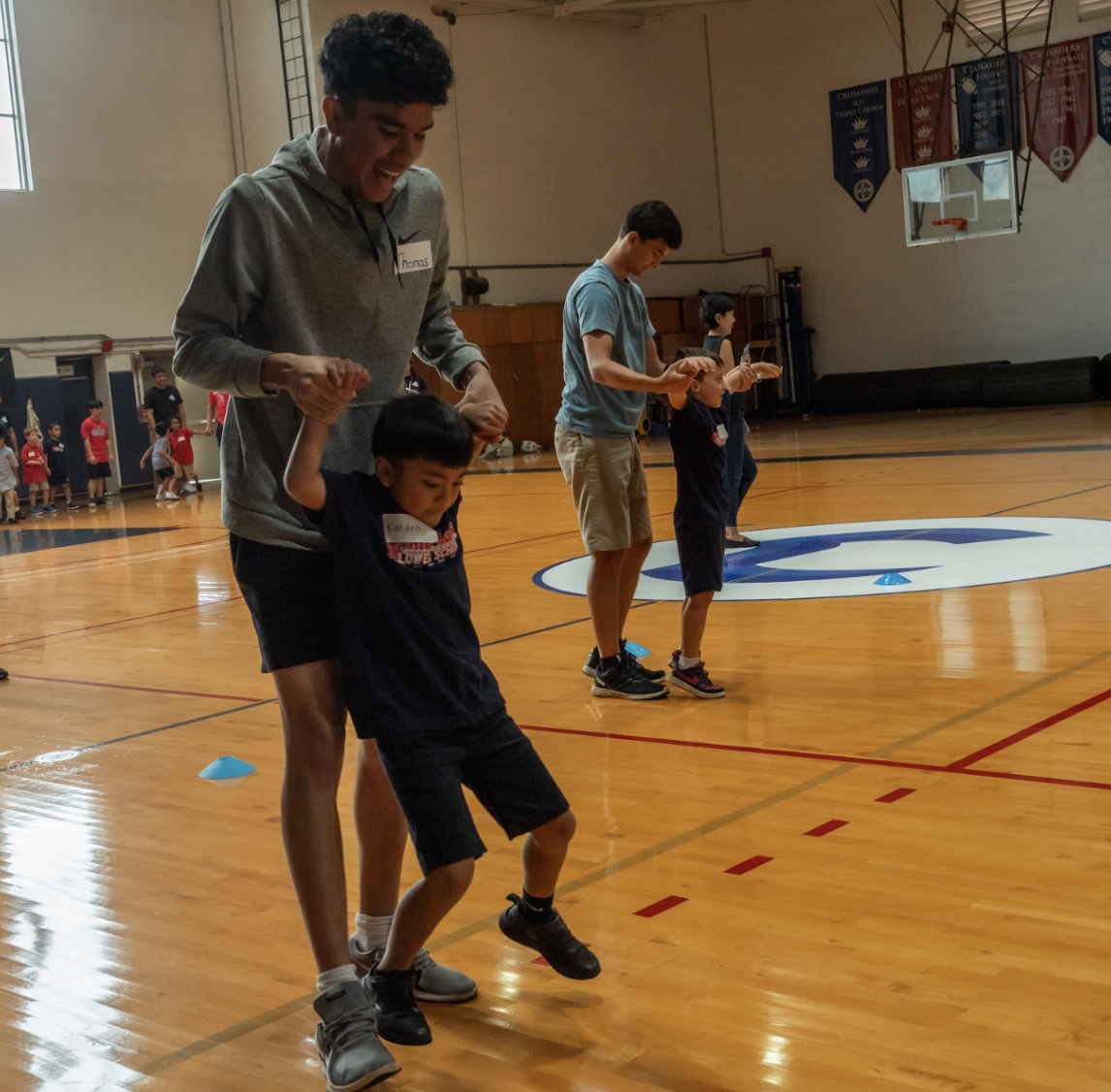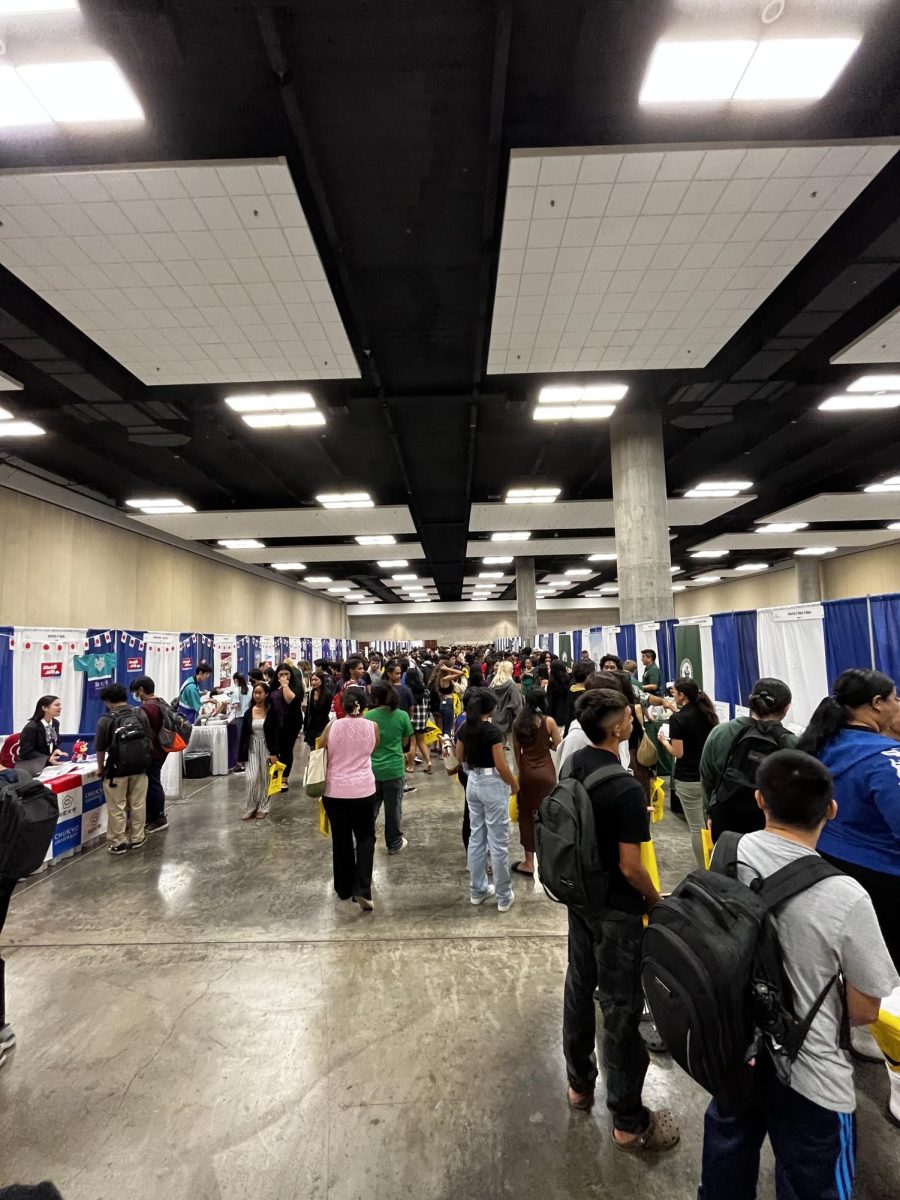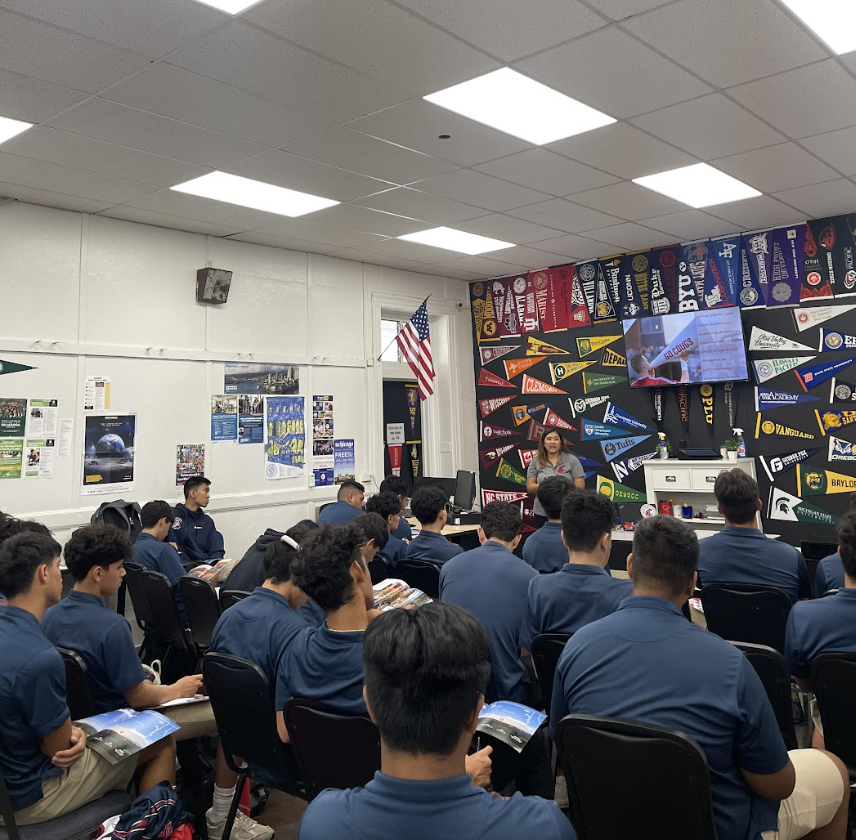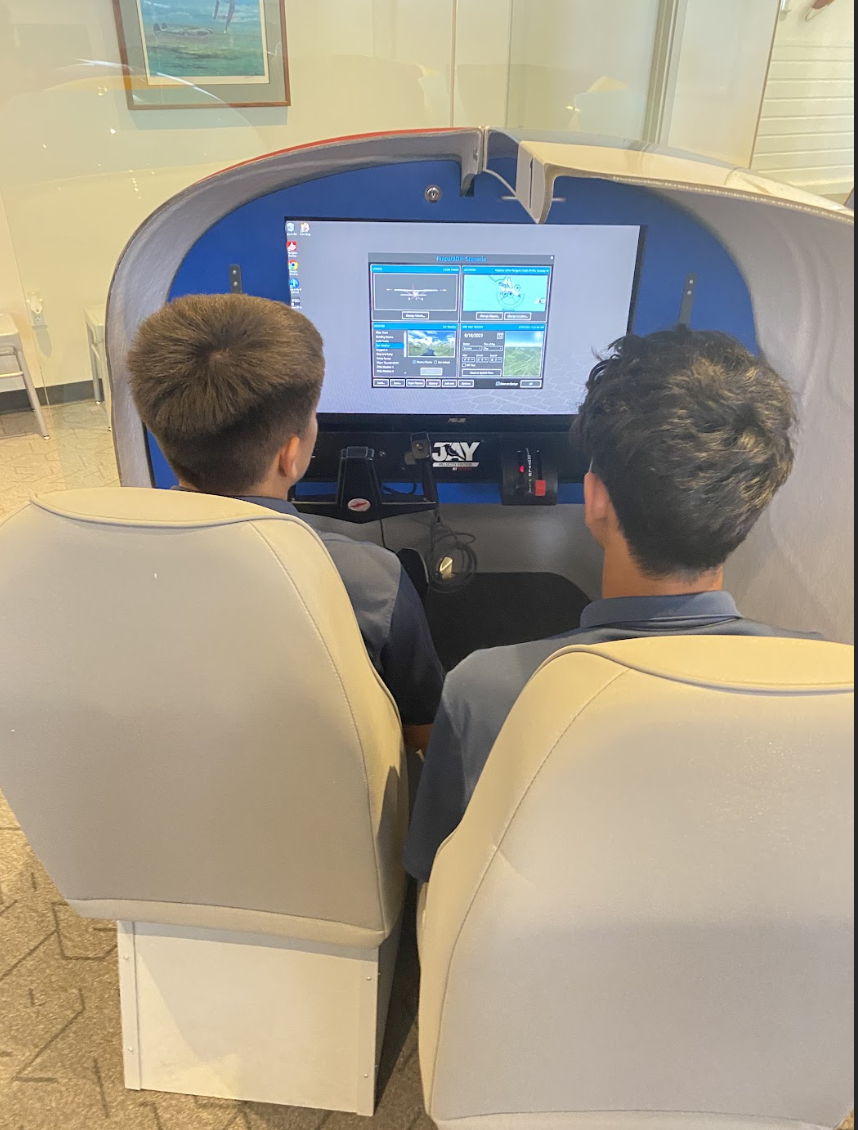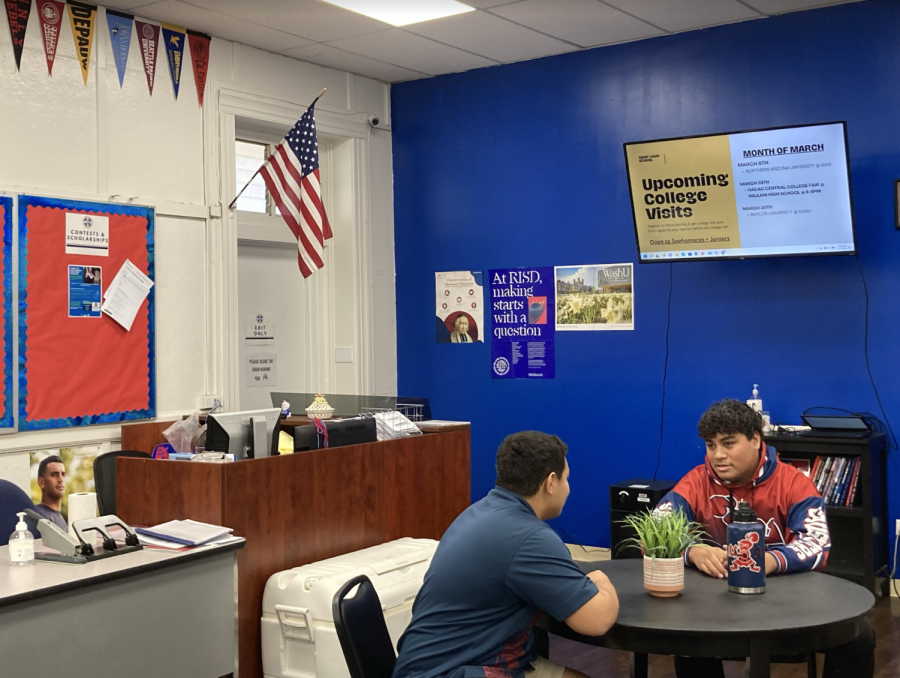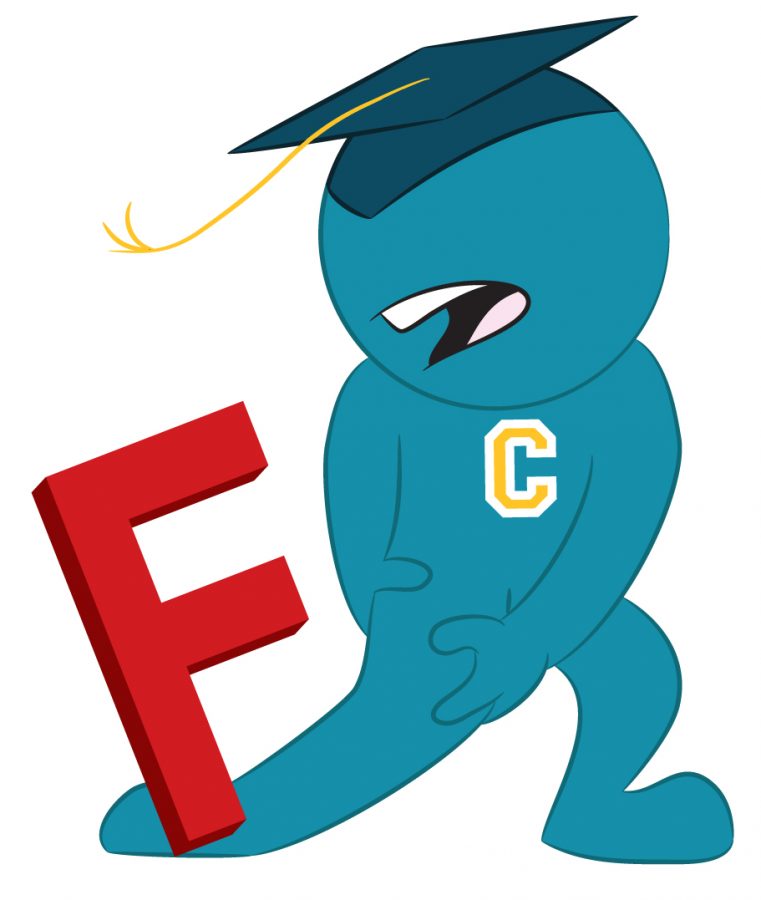Indigenous science teacher, Alyssa Jackson and Saint Louis School Director of Agriculture, Jon Watase, are providing students with a new way of learning.
Jackson and Watase have partnered together to take the students outside of the classroom as an opportunity to experience learning, as opposed to simply reading about it. “I have always felt that giving students a chance to authentically work with the materials that we are studying makes it more beneficial for them and it helps them realize it’s not just a definition,” explains Jackson. In addition to her role as a Science Teacher, Jackson also serves as the Aina-Based Learning Curricular Coach and Division Coordinator for the Class of 2026. She and Watase have the same vision to connect students with the environment, while also learning the importance of community.
In its second year, the Indigenous Science course has students excited and the class filled quickly. “This course really started because of a passion that SLS High School Principal, Tim Los Banos had, to bring a science curriculum that included cultural ideas in it and he was inspired by a program offered at UH Manoa,” said Jackson. This class is a way for upperclassmen to get an additional science credit, but also build a connection with where we live.
With their recent visits to the garden and to the Pālolo stream, juniors and seniors have the opportunity to interact with other students while developing their science skills. In recent weeks, students have had the chance to visit the stream to plant native trees and plants they have been growing with the help of Watase. “This class is mainly about not only taking care of our area but sustainability and how to grow food,” explains Watase.
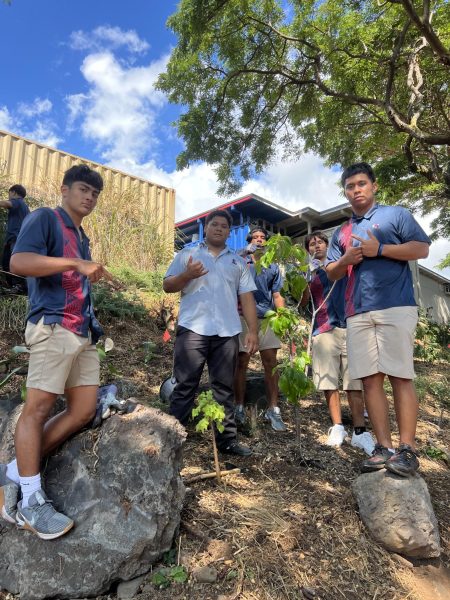 It is through this outdoor classroom experience that students really learn how to build a stronger tie with the community and also with their Saint Louis brothers. The class combines the “Brotherhood” bond while encouraging students to step outside their comfort zone.
It is through this outdoor classroom experience that students really learn how to build a stronger tie with the community and also with their Saint Louis brothers. The class combines the “Brotherhood” bond while encouraging students to step outside their comfort zone.
In America, 56% of students sit at a desk on their computer for at least 4.5 hours out of the day. Research shows that it can cause severe health issues, which is why courses like Indigenous Science are important.
This type of learning experience allows the student to get physical and learn at the same time. By feeding the mind, while at the same time, incorporating physical activity in the learning process, Saint Louis students are combining these two elements to obtain ownership of new information.
Many feel that just acquiring knowledge is the key to health; however, rather working your body while learning about what is most valuable to you, like the ideas taught in Indigenous Science creates an overall experience that can last a lifetime.
With the course becoming one of the most popular on campus, both instructors enjoy watching their students make an important connection to their environment. “ My hope is that every kid that takes my class goes out and does something good,” shares Watase, “not only for the community, but for themselves and their families.”


